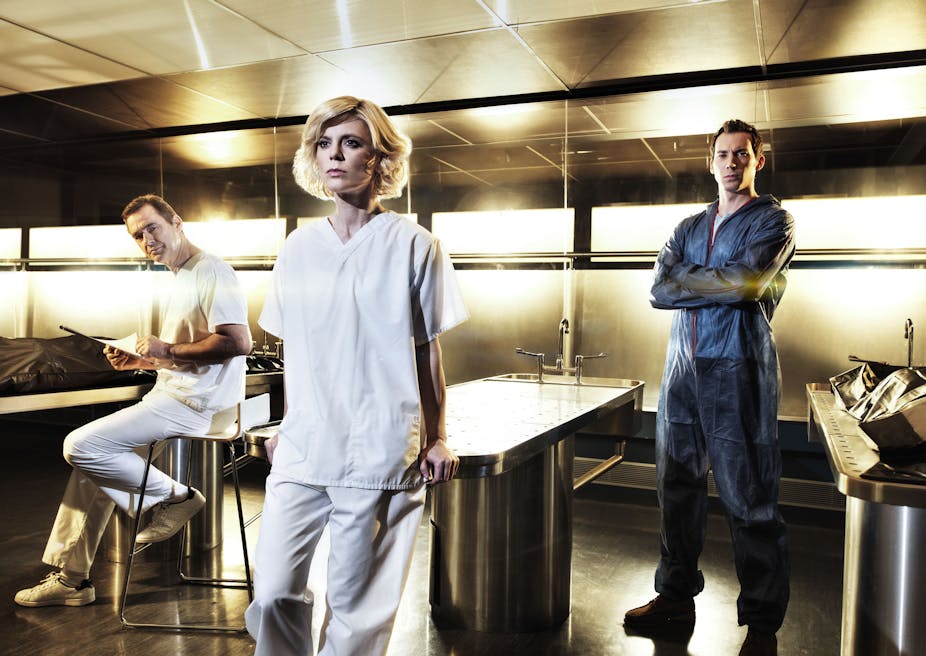Pulling bullets out of homicide victims makes up part of my job as a forensic pathologist, but not the most interesting part. No, I love a head-scratcher. Dead for no clear reason is the real whodunit. My favourite autopsies are unresolved hospital cases, when other doctors need my help in figuring out what went wrong, and what to do about it.
The paperwork told me the young woman on my table bled to death a few hours after receiving a transplanted liver from the victim of a motor vehicle accident. She had survived the transplant surgery, but afterwards appeared to be bleeding internally. Her surgeons had rushed her back into the operating room and performed a second operation in a failed effort to stem the haemorrhage.
When you bury an organ recipient you are putting two patients in the ground, so it was doubly important to me to figure out why this procedure had failed; but tracking down the source of internal bleeding during autopsy can be tricky. It’s like tracing a leak in an old house: a pool of water in the basement could be coming from a broken pipe or an over-running bathtub, or from a leaky roof. Blood inside the body might have trickled over time from faulty small vessels or gushed out all at once from torn large ones. It can slosh around inside one of the enclosed cavities of the torso, or it might sneak into unexpected and otherwise invisible spaces.
If enough of it leaves the closed loop of your circulatory system, however, the end result is always the same: you end up on my table in the morgue.
I took a scalpel to the woman’s chest and sliced down through the soft tissues until I reached bone. After cutting the ribs and opening the torso, I scissored the surgical sutures to open the patient’s stomach cavity to look for possible bleed sites, turning my attention first to the anastamosis, the connecting “suture” line between the blood vessels of the donor’s liver and the recipient’s body.
The sewn juncture of the inferior vena cava – the large vein that runs behind the liver – had a ratty look, with clotted blood around tiny tears in the vessel wall. This is normal, and if the clots had held this would not account for a belly full of blood. Around the surgery site I only found about a tablespoon’s worth.
However, in the rest of the abdomen there were small burst blood vessels (petechial haemorrhages) all over the place. Most of them had been burnt to a crisp with a cauterising tool during the emergency surgery. Cauterising is used to stop small haemorrhages during surgery. Could those pinprick leaks have been the source of all the bleeding? I’d seen plenty of transplant surgeries, but had never found so many bleeds.
It appeared the patient had died because she was prone to bleeding – but all liver transplant patients are. The blood’s clotting factors are proteins manufactured in the liver, and it can sometimes take a while for the newly transplanted organ to start producing them. The only clots I could find were around the suture line. From the autopsy it was clear this patient had continued to bleed from elsewhere – from everywhere. So the transplant surgery was a success, but the patient died.
The day after the autopsy I called the surgeon to get his story. What he described matched my naked-eye findings. “When we opened her back up she was oozing from everywhere,” he said. “Even the peritoneal wall was leaking blood.” He was chiefly interested in finding out whether the stitches on the inferior vena cava appeared intact. They had, I assured him. Based on what I saw when I dissected his work, both operations had been performed properly.
About two weeks later I got a call from a risk manager at the medical centre. Risk managers are hospital lawyers who can be either the bane of a clinician’s life or a knight in shining armour when something goes wrong and a patient gets hurt or dies.
The risk manager wanted to know which role he should assume for the surgeon in this case. “I wasn’t in the operating room,” I began, “but your surgeon’s story is consistent with my findings on autopsy. Well, not inconsistent anyway.” I told him that the tears I saw on the suture line could have been the source of lots of haemorrhage – or not. It depends on the patient’s blood flow and circulation at the time and whether the clot around the vessel held.
The lawyer didn’t much like that answer. It would be very hard for him to defend the hospital in a lawsuit by making a case that the patient died because she was “prone to bleeding”, since the reason she was prone to bleeding in the first place was the liver transplant surgery. That’s blaming the victim, which is never a good tactic. The lawyer had been hoping I would give him some other avenue to pursue.
But it’s my job to see for myself what happened to the body. That’s what the word autopsy means: “See for yourself”. I saw that this patient had slipped away in a seeping death of a thousand cuts, which no amount of desperate operating-room cauterising could have stemmed.
I never heard back from the lawyer so I assume no lawsuit happened. It struck me after filing this death certificate that I could have served as a witness for either the dead woman’s family or for the hospital. After I perform an autopsy I serve as advocate for no one but my patient. I am a doctor to the dead.

